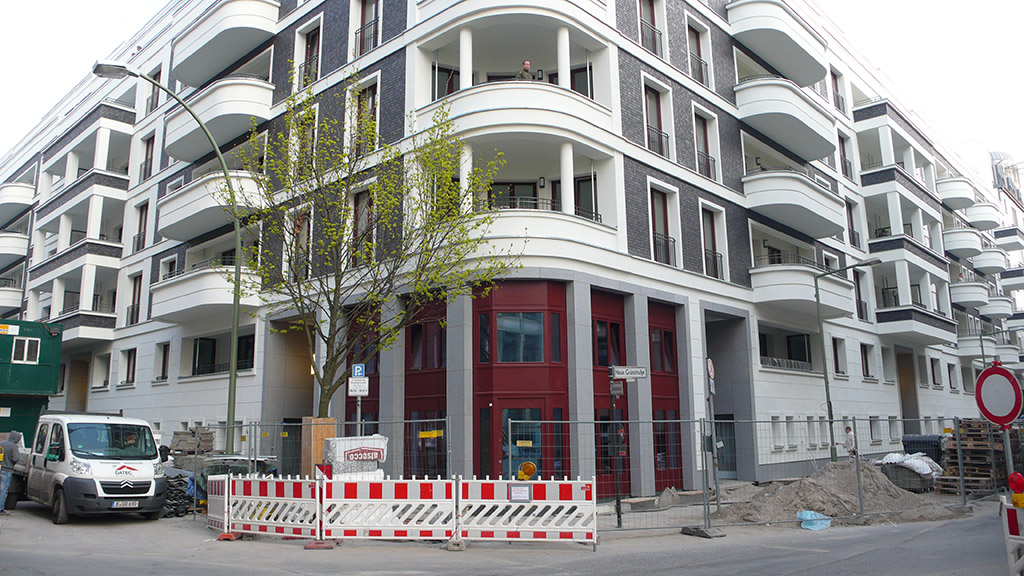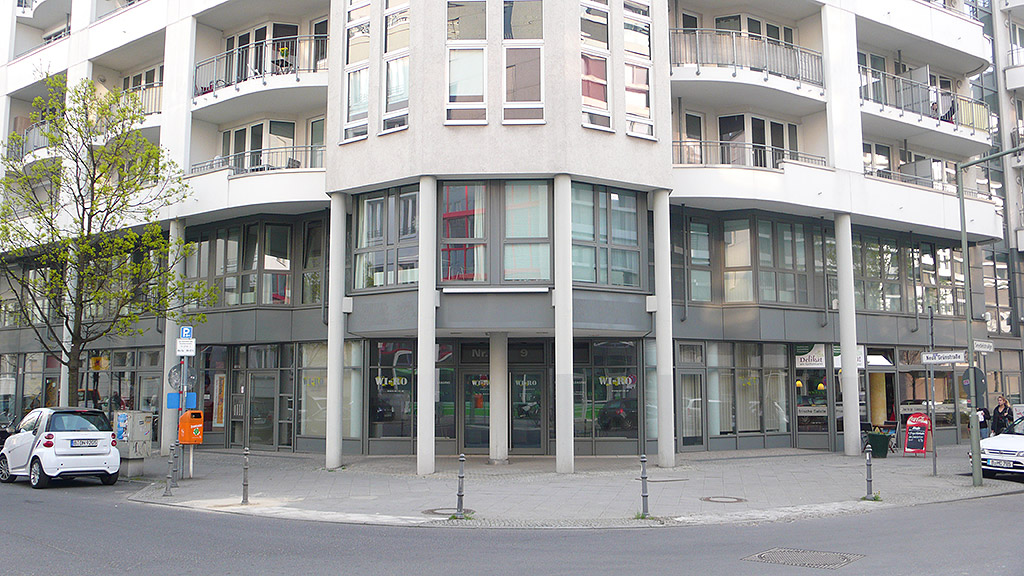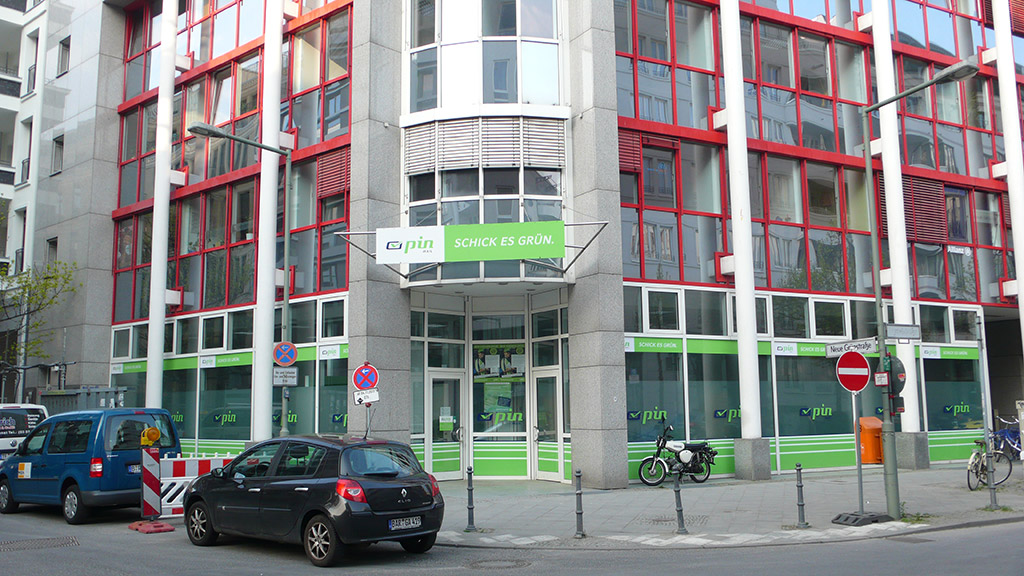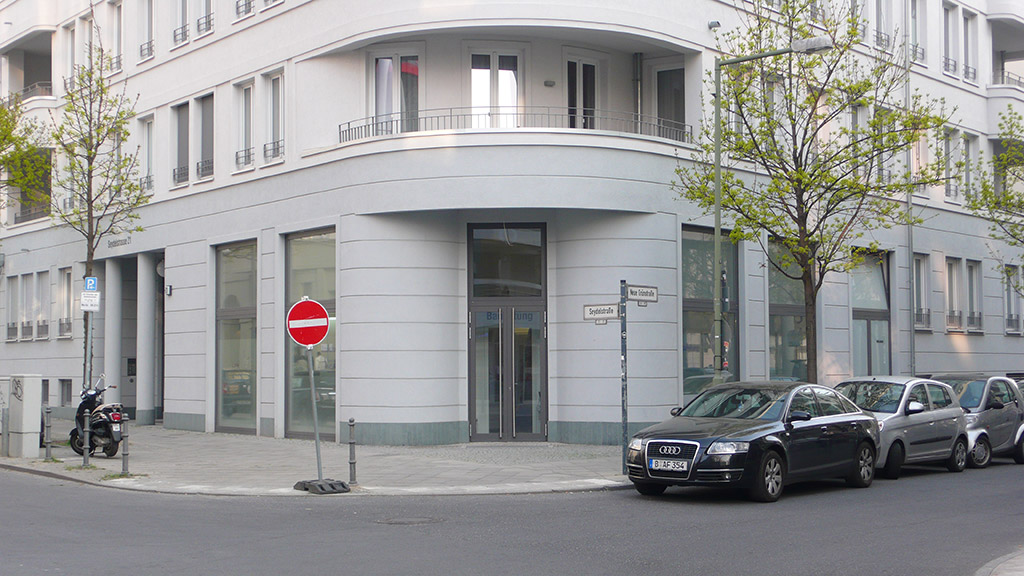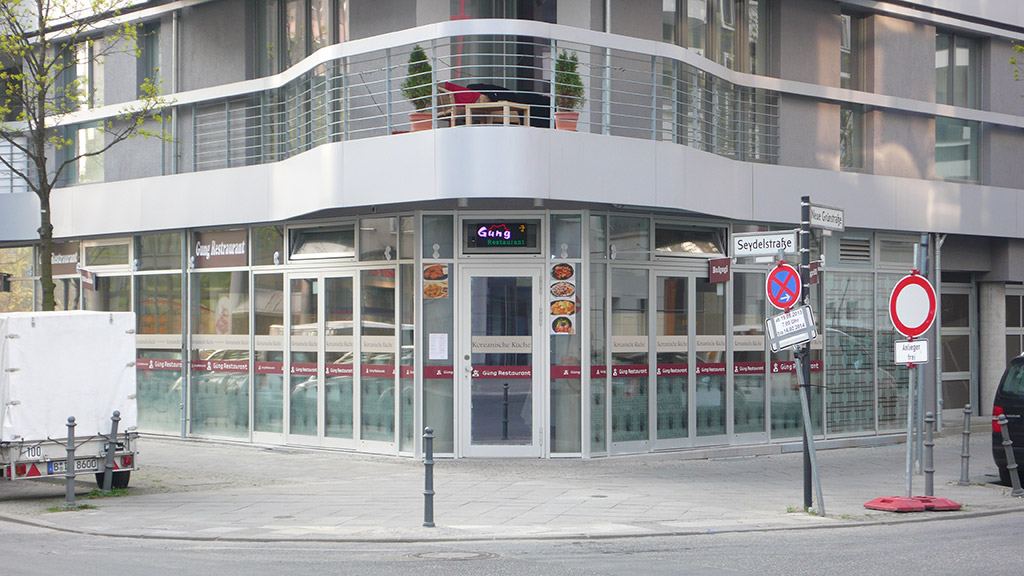Fubar Cornar
This journal just seems to keep on gravitating back towards the same part of town, which by now probably warrants its own section alongside stalwarts “Eurotrash” and “NDS”. I am of course talking about the corner of Kommandantenstraße and Neue Grünstraße, which is where the Fellini Residences, with all its Romanesque trash-talk, has defiantly ensconced itself. It now has company, and what was once a convincing inner-city prairie is now a dense sub-ornamental bricolage of extruded-foam vanity-investment posing as architecture and urban fabric. An anti-neighborhood.
Take this earnest rogue for example. It looks as though it turned up to a casting for Bristol or Bath 85 years too late, and came wearing the wrong frock to the wrong town. And one has to cast aside all other concerns for a moment and ask: what in fuckery is up with that corner? All the smoothly plastered, wedding-cake swoopery and hoax-brick pretension of the upper floors withers spectacularly at the junction of the two streets. In other words: right where the architecture needs to express a tidy narrative of convergence and admission.
Instead, we are given a blunt, wine-red protrusion suffering from a kind of myopic squint. The berkish symmetry of the upper stories does at least exhibit some kind of perspectival generosity, but at the entrance such graces are asked to kindly fuck off and die. The whole plasticky ensemble invites only horror. It resembles a pustule, or a hernia. Or a metastatic growth. Something which should be removed swiftly.
However, the gesture does have a local predecessor. Well over a decade ago, a pale cousin exhibiting similar symptoms was constructed one block down on Neue Grün and Seidel, and still endures, meaning that the ailment is sadly non-terminal. In some aesthetic concession to accessibility, this one at least exhibits a recess at ground-level, but the same poverty of conception can be observed in its off-the-shelf approach to construction. The building looks this way because that’s how its components fit together easiest. This is what now seems to pass as local heritage.
Whilst one might justly contemplate running for the hills, a brief look at each of the corners defining this junction is appealing, if only for the formality of a 360° survey. The building on the western corner takes the idea of manufact-destiny a step further. Constructed in a era when Styrofoam wasn’t yet the go-to material for façade design, it looks like a case-modded PC, or the suburban warehouse in Shenzen where half of the case-modding parts were shipped from.
The northern corner briefly reprises the theme of ice-frosting, albeit in a form which almost engulfs the entrance between the cleft cheeks of a grey, fluted buttock. The building’s perimeter walls are sealed and aloof, most of its windows are mounted high above the pavement well beyond prying eyes. The southern corner – part of the mysteriously trite Zvi Hecker complex – offers an amalgamation of all forms: the wavy bulge, the grey blandness, the fussy ground-floor window assemblage. Its transparency is all bluff: the glass is obscured by decorative adhesive foils.
There won’t be much scope for this anti-neigborhood to develop any kind of urban life in the future. The abandonment of its intersections to formal arbitrariness and the delegation of its ground-floors to a protective barrier or a utilitarian membrane, mean that street-life has been subjugated to a series of efficient vectors which allow for discreet entrances and quick exits, but give little reason to linger, or to dwell.
